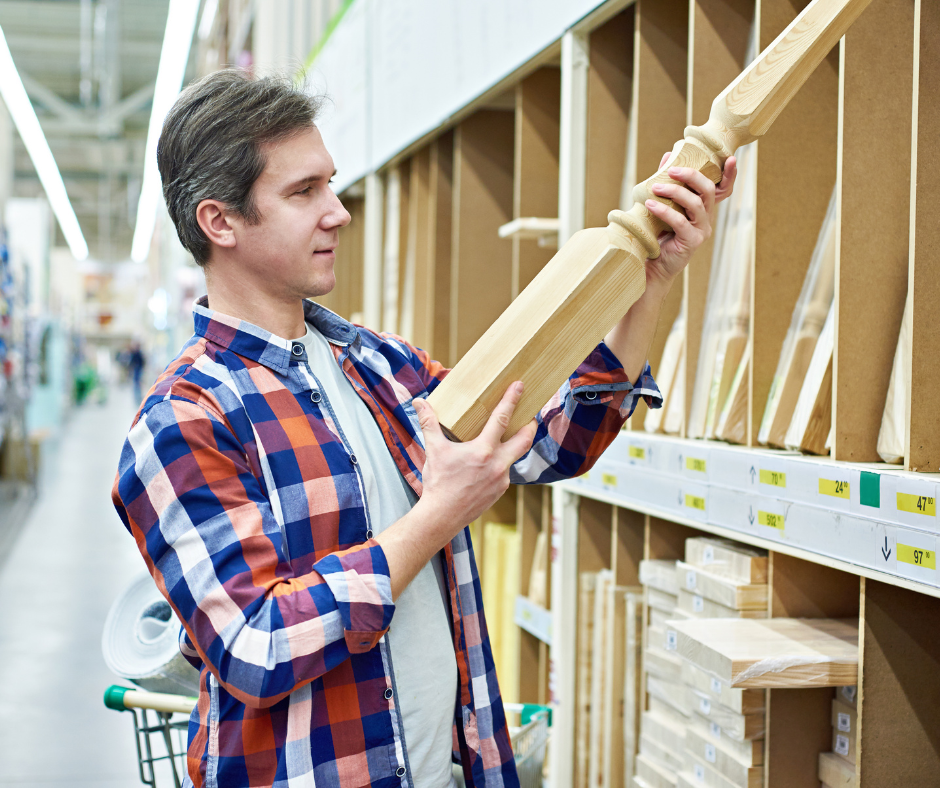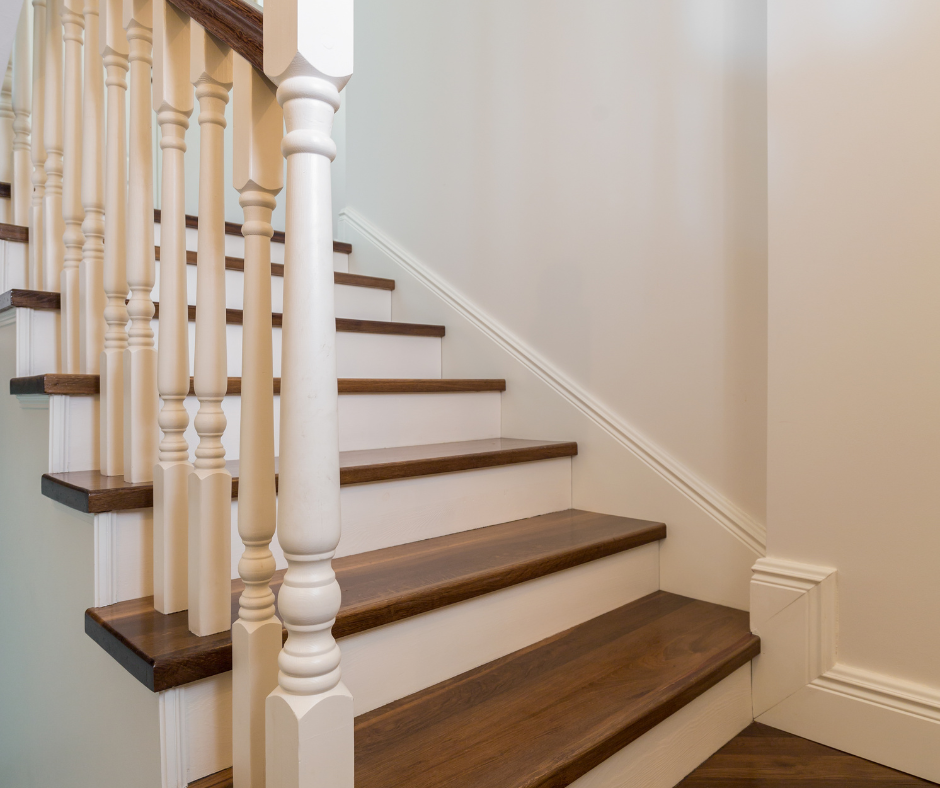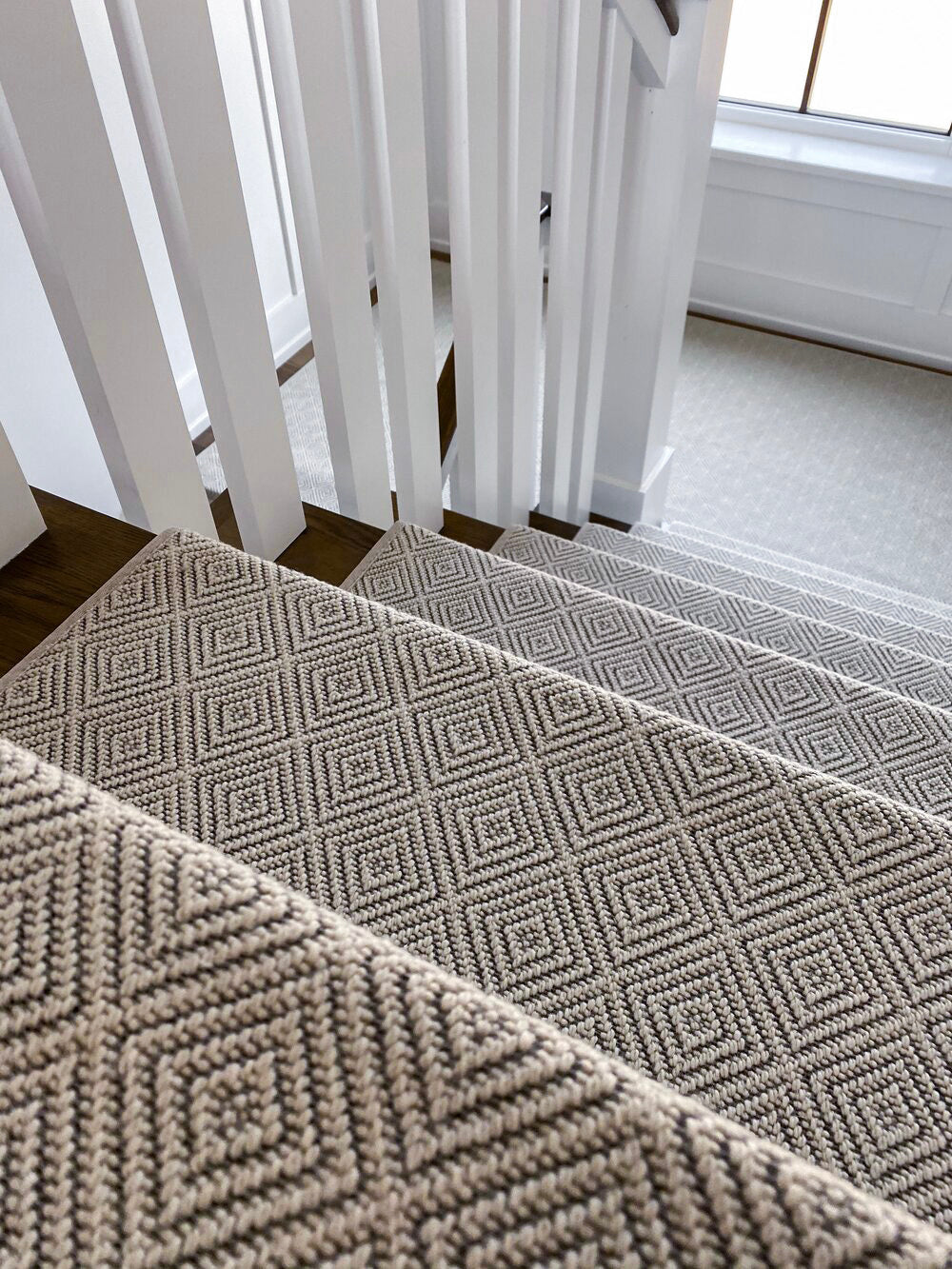Slipping on stairs can be scary—especially when kids, pets, or aging parents are involved.
So, are oak stairs slippery?
Not by nature, but they can become slick over time or in certain conditions like moisture or heavy foot traffic.
In this guide, you’ll learn what affects the traction of oak stairs, how they compare to other woods, and what to do if they become slippery.
We’ll also explore simple, affordable solutions—like carpet stair treads—that boost safety without sacrificing style or damaging your wood.
Let’s break down everything you need to know to make your oak staircase both safe and beautiful.
Why Oak Is a Safer Choice for Stairs
Oak has long been the gold standard for staircases—and not just because it looks great.
Its natural grain pattern and dense construction make it a smart, secure pick for busy homes.
Compared to woods like maple, cherry, or pine, oak has a textured grain that gives shoes, bare feet, and even tiny paws something to grip.
That grip is a built-in advantage, especially when compared to smoother, softer woods that can become slick over time.
Oak also stands up better to dents and dings, which means the surface stays even and safer for longer.
So… Are Oak Stairs Slippery?
By default, no—oak stairs are not inherently slippery.
But that doesn't mean they're slip-proof.
Like any wood surface, oak can become slick under certain conditions.
Understanding those risks is key to maintaining a safe stairwell for your family.
Let’s explore what causes even the safest stairs to become hazardous.
What Makes Oak Stairs Slippery?
While oak offers a strong starting point, several everyday factors can still reduce traction.
Whether you’re dealing with indoor stairs or slippery wood stairs outdoor, these are the things to watch for:
1. Moisture and Humidity
One of the biggest threats to stair safety is water.
Whether it’s wet shoes tracking in rain, condensation on outdoor steps, or a spilled drink, moisture dramatically reduces grip on wood surfaces.
On slippery wood stairs outdoor, water and weather exposure can invite mold, mildew, and algae—all of which can make even the most textured wood dangerously slick.
2. Finish and Gloss Level
Believe it or not, your choice of finish can make a big difference in stair safety.
High-gloss polyurethane looks beautiful but creates a slick surface.
A satin or matte finish is a much safer bet if you’re worried about traction.
3. Everyday Wear and Cleaning Products
Even with oak’s durability, time and use will smooth out surface texture.
That’s especially true if stairs are cleaned with oil-based or waxy products that leave a residue.
Avoiding slippery cleaning products is just as important as choosing the right wood.
4. Dirt, Dust, and Pet Hair
Debris acts like ball bearings on your stairs—especially on smooth, worn areas.
If you have dogs or kids, it’s even more essential to keep your stairs free from daily grime.
Indoor vs. Outdoor Oak Stairs: What’s the Difference?
When homeowners ask, are oak stairs slippery?, they’re often asking about their inside stairs—but outdoor stairs are another story.
Oak stairs exposed to the elements require special attention.
Rain, snow, frost, and falling leaves all increase the risk of slipping.
And unlike indoor stairs, these outdoor surfaces often don’t get cleaned as often—giving mold and algae time to grow.
What to Watch for Outdoors
-
Standing water after rain
-
Snow and ice accumulation
-
Green algae or moss near shaded areas
-
Worn-out or missing anti-slip protection
If your home has slippery wood stairs outdoor, it’s time to take action before someone gets hurt.
Thankfully, there are affordable and attractive ways to make your stairs safer—without compromising your style.
Best Ways to Prevent Slippery Oak Stairs
You don’t need to completely overhaul your staircase to make it safer.
With the right solutions, you can keep your oak stairs both safe and stunning.
1. Clean with Care
Avoid using cleaning products that leave behind a slippery film.
Opt for wood-safe cleaners that maintain traction without buildup.
Make a habit of regularly wiping down your stairs, especially during rainy or snowy months.
2. Refinish with Safety in Mind
If your stairs are looking a little too shiny, consider refinishing them with a matte or satin sealant.
These finishes preserve the natural grain of oak while adding just the right amount of grip.
Ask your flooring professional about adding a traction-enhancing agent to the sealant for an extra layer of safety.
3. Use Non-Permanent, DIY Solutions
This is where things get exciting—because safe can still be stylish.
At Oak Valley Designs, we recommend anti slip treads for wooden stairs as one of the easiest and most effective ways to boost traction.
Our carpet stair treads are:
-
Easy to install (no tools needed)
-
Soft underfoot
-
Safe for pets and kids
-
Designed to stay in place
-
Available in dozens of styles and colors
They’re also removable, which means you can change the look seasonally or for special occasions without damaging your stairs.
Other DIY options include:
-
Clear grip tape strips for a subtle fix
-
Adhesive-backed rubber treads
-
Non-slip paint additives for outdoor stairs
4. Upgrade Your Outdoor Stair Safety
When it comes to slippery wood stairs outdoor, prevention is even more critical.
Consider adding:
-
Outdoor-safe anti-slip treads with UV protection
-
Textured or grooved paint
-
Drainage solutions to prevent standing water
-
A canopy or awning to reduce rain exposure
At Oak Valley, we’ve worked with countless homeowners who wanted a safer outdoor setup without sacrificing their curb appeal.
Our outdoor tread collections are designed with this in mind—weather-resistant, gorgeous, and easy to install.
5. Call in the Pros (When Needed)
If your oak stairs are old, uneven, or dangerously slick even with treads, it might be time to consult a professional.
A flooring expert can apply chemical etching or professional non-slip coatings to the surface to permanently increase traction.
But for most homes, a set of well-designed anti slip treads for wooden stairs does the job beautifully—and affordably.
Oak Stairs vs. Other Wood Options
If you're weighing oak against other stair materials, it’s helpful to know how it stacks up in terms of safety.
Here’s how oak compares:
-
Oak vs. Pine: Pine is much softer and wears down faster, often becoming more slippery over time.
-
Oak vs. Maple: Maple has a tighter, smoother grain that looks clean but doesn’t offer the same grip as oak.
-
Oak vs. Cherry: Cherry is beautiful but pricey and more prone to becoming slick when polished.
In nearly every case, oak wins for traction, durability, and peace of mind.
Do You Really Need Stair Treads?
If your oak stairs are indoors, well-maintained, and not in a high-traffic zone, you might not need anything more than regular cleaning and a good finish.
But for households with:
-
Active kids
-
Seniors or aging parents
-
Pets
-
Guests or renters
-
Slippery wood stairs outdoor
Stair treads are worth the investment.
They don’t just improve safety.
They protect the wood, cut down on noise, and can even increase your home's resale value by showing thoughtful care and maintenance.
How to Choose the Right Anti-Slip Solution
So, how do you know which anti-slip solution is best for your home?
Ask yourself:
-
Are my stairs exposed to water or humidity?
-
Is the finish glossy or worn down?
-
Who uses these stairs daily?
-
Do I want a DIY solution or professional install?
If you're looking for affordable, stylish, and damage-free protection, our anti slip treads for wooden stairs are hands-down the best place to start.
And if you’re dealing with slippery wood stairs outdoor, look for outdoor-rated materials that can handle heat, moisture, and sun exposure without fading or peeling.
Stepping It Up
So, are oak stairs slippery?
Not naturally—but without care, they can be.
Oak is a top-tier choice for staircases because of its natural traction, strength, and long-lasting beauty.
But life happens.
Rain falls.
Dogs run.
Kids slide.
And that’s why it’s important to take simple, smart steps to make your stairs safer—without giving up on style.
From indoor comfort to outdoor safety, Oak Valley Designs is here to help you love every step.
Looking to make your stairs safer without sacrificing their good looks?
Try our best-selling carpet stair treads and discover why homeowners across the country are stepping into a better way to live.
-
Website: https://oakvalleydesigns.com/
-
Phone: 706.331.0315
-
Email: info@oakvalleydesigns.com
-
Address: 30 River Ct SW Bldg E Cartersville, Ga 30120




